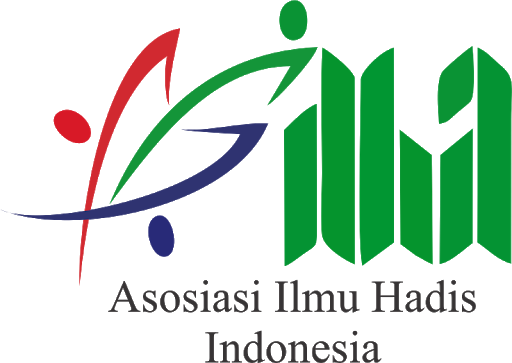LIVING HADIS: GENEALOGI, TEORI, DAN APLIKASI
DOI:
https://doi.org/10.14421/livinghadis.2016.1073Keywords:
Living hadis, genealogi, resepsiAbstract
Within a decade, the study of Living Qur’an and Living Hadithand has flourished in Indonesia. Number of research about phenomena of either practices of rituals has been done. This article, departs from that fact, endeavors to explore model of living hadith, from its genealogical presence, theories that have been applied, up to technic which used into various kinds of research.
 Abstract viewed: 15572 times
|
Abstract viewed: 15572 times
|
 PDF downloaded = 23640 times
PDF downloaded = 23640 times
References
al-Adlabi, Shalahuddin Manhaj an-Naqd al-Matan, Beirut: Dar al-Āfaq al-Jadidah, 1983.
al-Bagdadi, Khatib, Kitab al-Kifāyah fi ‘ilm ar-Riwāyah, Mesir: Matba’ah as-Sa’adah, 1972.
Al-Baihaqi, As-Sunan ash-Shagīr li al-Baihaqi, Juz 2, Beirut: al-Kutub alIlmiyyah, 1992.
Berger, Peter L. dan Thomas Luckmann, The Social Construction of Reality: A Treatise in the Sociology of Knowledge, London: Penguin, 1991.
Bourdieu, Pierre, The Logic of Practice, Stanford: Standford University Press, 1992.
Cresswell, John W, Penelitian Kualitatif, Memilih diantara 5 Pendekatan, Yogyakarta: Pustaka Pelajar, 2014.
Endraswara, Suwardi, Metodologi Penelitian Sastra: Epistemologi, Model, Teori dan Aplikasi, Yogyakarta: Pustaka Widyatama, 2003.
Hans Wehr, The Dictionary of Modern Written Arabic, New York, Itacha: Spoken Language Services Inc., 1975.
Ismail, Syuhudi, Metodologi Penelitian Hadis Nabi, Jakarta: Bulan Bintang, 1992.
__________, Hadis Nabi Yang Tekstual dan Kontekstual, Jakarta: Bulan Bintang, 1984.
Metcalf, Barbara D., “Living hadith in the Tablighi Jamaat” The Journal of Asian Studies, Vol. 52, No. 3 August., 1993.
Najwah, Nurun, “Rekonstruksi Pemahaman Hadis-hadis Perempuan” Disertasi Yogyakarta: UIN Sunan Kalijaga, 2004.
__________, Ilmu Ma’anil Hadis, metode Pemahaman Hadis Nabi: Teori dan Aplikasi, Yogyakarta: Cahaya Pustaka, 2008.
Qardawi, Yusuf, Kaifa Nata’aamal ma’a as-Sunnah NabawiyahWashington: al-Ma’had al-‘Alamy lil fikr al-Islamy, 1989.
Qudsy, Saifuddin Zuhri & Ali Imron, Model-model Penelitian Hadis Kontemporer, Yogyakarta: TehaPress bekerjasama dengan Pustaka Pelajar, 2013.
__________, dkk, “Tradisi Puasa Senin Kamis di Kampung Pekaten.” (Yogyakarta: Laporan Penelitian Lemlit, 2013.
__________, “Kisah Dua Keluarga: Sebuah Kajian Etnografis (Memotret Kebudayaan Islami Berdasar Pada Teks Al-Qur’an dan Hadis Pada Dua Keluarga Di Yogyakarta),” Laporan Penelitian, Yogyakarta: Lemlit UIN Sunan Kalijaga, 2015.
_________, (Ed.) “Melihat Sisi Kreatif Mesjid Jogokaryan” Laporan Penelitian, Yogyakarta: Prodi Ilmu Al-Qur’an dan Tafsir, 2014.
Ratna, I Nyoman Kutha, Teori, Metode, dan Teknik Penelitian Sastra, Yogyakarta: Pustaka Pelajar, 2008.
As-Syafi’i, Muhammad bin ‘Idris, al-Umm, Vol. III, Pakistan: Daar alWafa, 2001.
Suryadi, “Dari Living Sunnah ke Living Hadis”, dalam Sahiron Syamsuddin (Ed.), Metodologi Penelitian Living Qur’an dan Hadis, Yogyakarta: TH Press bekerjasama dengan Penerbit Teras, 2007.
Suryadilaga, Alfatih, “Mafhūm al-ṣalawāt ‘inda majmū‘at Joged Shalawat Mataram: Dirāsah fī al-ṣadīth al-ṣayy” Jurnal Studia Islamika Vol. 21, No. 3, 2014.
Syamsuddin, Sahiron (Ed), Islam Tradisi dan Peradaban, Yogyakarta: UIN SUKA PRESS bekerjasama dengan Bina Mulia, 2012.
Downloads
Published
Issue
Section
License
- Authors who publish with this journal agree to the following terms:
- Authors retain copyright and grant the journal right of first publication with the work simultaneously licensed under a Creative Commons Attribution License that allows others to share the work with an acknowledgement of the work's authorship and initial publication in this journal.
- Authors are able to enter into separate, additional contractual arrangements for the non-exclusive distribution of the journal's published version of the work (e.g., post it to an institutional repository or publish it in a book), with an acknowledgement of its initial publication in this journal.
- Authors are permitted and encouraged to post their work online (e.g., in institutional repositories or on their website) prior to and during the submission process, as it can lead to productive exchanges, as well as earlier and greater citation of published work.
















